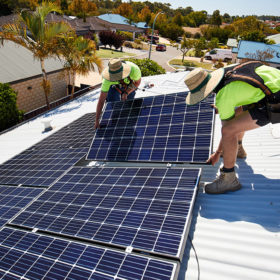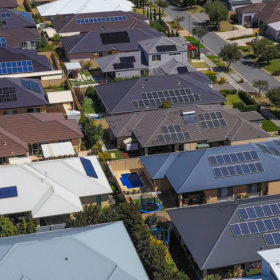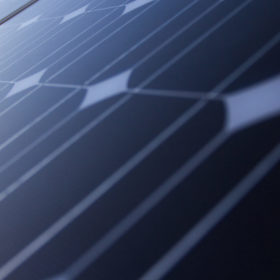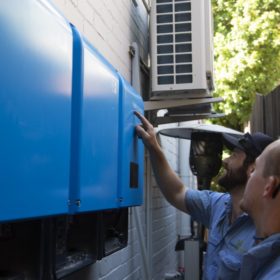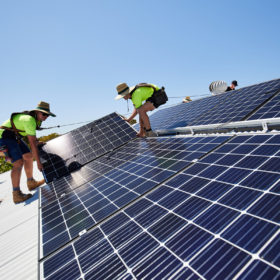Territory reveals plans to reduce solar feed-in tariff
An estimated 13,000 rooftop solar PV customers in Australia’s far north face having their feed-in tariff for solar power exported to the grid slashed by more than half with the Northern Territory government revealing plans to usher in changes to the existing scheme from 1 July.
Regulator investigating potential $1.7 million solar panel fraud
A Western Australian solar PV company is being investigated by the Clean Energy Regulator amid concerns it falsified information relating to more than 500 solar panel installations that created about $1.7 million in Small-scale Technology Certificates.
Renac Power unveils high-voltage residential battery
Renac Power’s new plug-and-play battery has a storage capacity of 3.74 kWh, but it can be enhanced in series with up to five batteries to 18.7 kWh. It has a nominal voltage of 96 V and a voltage range of 81 V to 108 V.
Solar companies battle to keep staff, claim regulatory system is depressing industry quality
Solar companies are reporting widespread staff shortages leading to false price points around the value of installers. Scott Mason, general manager of Platinum Solar Designs, says the shortages aren’t simply part of Australia’s broader skills scarcity, but rather are endemic to the solar industry and linked to a regulatory system which is pushing down the quality of installations.
Elon Musk wins SolarCity lawsuit, avoids $2.8 billion judgment
Business magnate Elon Musk has avoided what would have been the largest judgment in US history on an individual executive.
Solar panel glut causing messy ‘false economy’
Global solar supply chain issues and the Chinese energy crisis which hit in the second half of last year have, ironically, led to a “massive” oversupply of solar panels in Australia, according to major distributors. The tension between increased global panel costs and the glut of them within Australia has led to some messy pricing and strange market dynamics on the ground.
Over half of Australian solar installers move into storage as top industry brands named
The amount of solar installers offering storage solutions grew considerably in 2021 and promises to surge again this year, according to an annual survey by EUPD Research. The research centre has also released the top three 2021 brands for solar modules, inverters and storage in the Australian market, offering insights into where companies are buying equipment and which segments are seeing the most growth.
Solar the energy workhorse in latest gloomy IPCC verdict
Photovoltaics can wipe out 4.25 billion tonnes of carbon emissions every year this decade, according to the UN Intergovernmental Panel on Climate Change. Even so, the actions announced so far remain way short of what is needed, with capital flows to fossil fuels still greater than the cash directed toward combating climate change.
Enphase launches pilot to pay US solar customers for leasing batteries, sharing energy
Homeowners who participate in a new Enphase pilot project will connect their home batteries to the US grid, sharing energy through Green Mountain Power’s distribution system in exchange for financial incentives.
Market influences tipped to end rooftop solar’s record run
Australia has one of the highest per-capita rooftop solar PV installation rates in the world with more than 16GW installed across more than 3 million households but the head of Australian research at U.S.-based analyst Bloomberg New Energy Finance has forecast a drop off in new installations in 2022.
